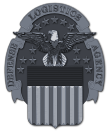Description:
Acquire to Retire (Equipment): Planning for Equipment: Planning for Equipment (Material Weakness)
ELMS MM module currently supports only pull-based requisitioning, which prevents Inventory Control Points (ICPs) from proactively distributing materiel based on command direction, readiness requirements, or forecasted operational demand. This absence of a Push Fulfillment (ICP Directed MRO Issue) capability limits the USMC’s ability to preposition assets, re-balance inventory, and execute time-critical resupply actions – especially for MARCORSYSCOM and MARFORRES organizations.
Additionally, ELMS lacks the ability to automatically generate DLMS 527D/DWB Prepositioned Materiel Receipt (PMR) transactions when transferring ownership of assets between Primary Inventory Control Activities (PICAs) or ICPs through a third-party storage or distribution site. The current process requires manual, offline creation of these transactions, resulting in fragmented data flow, inconsistent audit trails, and potential discrepancies in custodial accountability and ownership records.
The combined absence of automated push fulfillment and system-driven 527D/DWB ownership transfer functionality forces reliance on manual workarounds that degrade visibility, increase processing time, and heighten the risk of data mismatches across warehouse, ICP, and financial systems. These deficiencies also impede full DLMS compliance, complicate reconciliation between issuing and gaining activities, and introduce audit vulnerabilities within FIAR and ELMS-aligned accountability frameworks.
Implementing an integrated ICP Directed MRO Issue process within ELMS—complete with automated generation of 940R, 945A, 856S, 870S, and 527D/DWB transactions—will ensure accurate, DLMS-compliant execution of directed shipments, ownership transfers, and audit-ready traceability. The absence of a system-driven, DLMS-compliant “ICP Directed MRO Issue” process introduces a significant materiel weakness. Manual workarounds—such as ad hoc issue documentation, offline tracking, or non-standard DLMS transactions—degrade audit compliance and complicate reconciliation between ICP, warehouse, and accounting systems. Additionally, the inability to incorporate serialized tracking, third-party consignee shipments, or automated PMR (527D/DWB) generation further constrains the Marine Corps’ ability to support distributed maritime and expeditionary operations.
Recommended:
README: The following nine attachments are embedded within the GAP-109 Push Fulfillment (ICP Directed MRO Issue) BRD package to provide the complete set of supporting technical, functional, and design requirements required for implementation. Collectively, these attachments document the end-to-end process flow, user interface design, DLMS XML transaction mappings, and detailed requirements specifications for all five modified DLMS messages (940R, 527D, 945A, 856S, and 870S). Their inclusion ensures that ELMS developers, testers, and stakeholders possess authoritative references linking the business process to the technical configuration, thereby enabling DLMS-compliant system development, audit-ready validation, and seamless integration of the new Push Fulfillment capability within the Materiel Management (MM) module.
1 – GAP109_ELMS_Push_Fulfillment_Requirements_RTM_20251008.xlsx
This Excel workbook serves as the master Requirements Traceability Matrix (RTM) for the Push Fulfillment capability. It consolidates all functional and non-functional “shall” statements generated for GAP-109, cross-referencing each requirement to DLMS standards, transaction sets, and validation criteria. The file ensures end-to-end traceability from BRD objectives to development and test cases within ELMS MM.
1a – GAP 109_BRD_ELMS_USMC_MARCORLOGCOM_1.b ICP DIRECT MRO ISSUE Process Flow_v2.0 (20251006)
This process flow illustrates the end-to-end ICP Directed MRO Issue workflow within the ELMS Materiel Management (MM) module, depicting user roles, decision logic, validations, and DLMS transaction triggers (940R, 527D, 945A). It provides system developers and testers a visual baseline for how “Push Fulfillment” actions move from MRO creation through warehouse release and transaction generation. Included to serve as the primary business-process reference for implementing, testing, and verifying GAP-109 functionality
1b – GAP 109_BRD_ELMS_USMC_MARCORLOGCOM_1.b ICP DIRECTED MRO ISSUE Screen Layout (20251006)
This attachment presents the user-interface design and required input fields for the new “ICP Directed MRO Issue” entry screen, including header, body, and inventory-selection components with DoDAAC, RIC, PMR, TAC, and serial-number data entry rules. It provides developers with a precise UI blueprint and control-validation guide ensuring compliance with DoDAAF standards and proper capture of all requisition data elements during push fulfillment.
2 – GAP 109_BRD_ELMS_USMC_MARCORLOGCOM_1.b ICP DIRECTED MRO ISSUE _XML Transactions Mapping_v2 (20251009).xlsx
This multi-tab mapping workbook defines the DLMS XML schema field mapping for the five modified transactions (940R, 527D, 945A, 856S, 870S). Highlighted tan cells indicate missing segments to be added; red cells flag non-compliant elements requiring removal or correction. It is included to guide developers in achieving full DLMS Interface Convention alignment for each ELMS interface.
3 – GAP109_Push_Fulfillment_DLMS_XML_940R_Requirements_20251009v3.pdf
Specifies requirements for the DLMS 940R (Warehouse Shipping Order) message that initiates push-fulfillment actions from the ICP to RSAs or third-party consignees. It details data fields, validation logic, and message structure needed to automate directed materiel releases and ensure schema compliance with DLMS IC 940R.
4 – GAP109_Push_Fulfillment_DLMS_XML_527D_Requirements_20251009v1.pdf
Documents requirements for the DLMS 527D/DWB (Prepositioned Materiel Receipt) are used to record ownership transfer between PICAs/ICPs via third-party storage sites. It defines triggers, mandatory data elements, and audit-logging requirements replacing the current manual PMR process, ensuring automated, FIAR-compliant custody updates.
5 – GAP109_Push_Fulfillment_DLMS_XML_945A_Requirements_20251009v1.pdf
Outlines requirements for the DLMS 945A (Warehouse Shipping Advice) transaction confirming fulfillment of directed MROs. It captures shipment quantities, serial details, and consignee data, linking back to originating 940R orders. Included to formalize message generation and closure logic supporting audit-ready shipment verification.
6 – GAP109_Push_Fulfillment_DLMS_XML_856S_Requirements_20251009v1.pdf
Defines requirements for the DLMS 856S (Advance Ship Notice / Manifest) message used to communicate detailed shipment information—carrier, packaging, and serialized item content—to receiving and third-party sites. This file ensures ELMS can provide standardized, real-time shipment visibility aligned with DLMS IC 856S.
7 – GAP109_Push_Fulfillment_DLMS_XML_870S_Requirements_20251009v1.pdf
Describes the DLMS 870S (Supply Status) message requirements used to transmit real-time status updates throughout the push-fulfillment lifecycle. It specifies event codes, routing, and validation rules that synchronize ICP, RSA, and consignee systems, closing the DLMS transaction chain with complete audit traceability.
Mission Critical:
ELMS is not currently fully compliant with DLMS transactional policy
Benefits:
- Meets MARCORLOGCOM’s business model
- Assists in 100% accountability of assets.
- Complies with current audit controls.
Frequency: Daily
Users:



